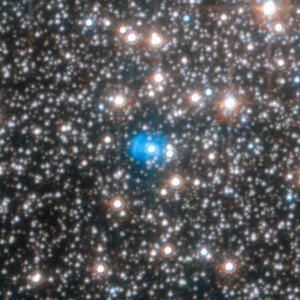When I was younger, it was pretty common on clear nights to see me at the end of my driveway with my telescope. And one of my favorite targets to observe was (and still are) globular clusters: hundreds of thousands, and sometimes millions of stars all bound together in a tight ball due to their gravity. And one of the best of those is the fabulous M15… and when it’s seen by Hubble, well, it’s simply spectacular:
Holy wow! Click to englobulenate - I had to shrink the image a lot to get it to fit here, so as gorgeous as this is it’s a shadow of the higher-res version… or the ginormous full-res one!
M15 is relatively nearby as globulars go, about 35,000 light years. Over 150 of these objects orbit our galaxy, and so some are quite far away. Not only is it close, but M15 is also fairly densely-populated, its stars orbiting each other like bees around a beehive, making it a pretty easy target for amateur astronomers. It was one of the first things I’d go after once it got dark in the autumn, and it would appear as a fuzzy ball in my 25 cm ‘scope. Of course, when you aim the 2.4 meter mirror of Hubble at it, well. You can see for yourself.
This false-color image is a combination of two pictures; one taken in visible light (colored blue; in reality the filter used let through yellow and red light), and the other in near-infrared (colored red). That selects out redder stars; the brightest ones are red giants, stars nearing the ends of their lives, and the fainter ones are lower-mass stars that are still busily fusing hydrogen into helium in their cores.
 If you look to the left and a bit below the cluster’s center, though, a blue glow sticks out among all the red. If you do grab the seriously super high-res version of the image, you get a much better look at it. I’ve zoomed in on it here. It’s clearly not a star; the blue halo is much larger than any star image, and you can see the rim on the left hand side is bright. What gives?
This is a planetary nebula, the shell of gas expelled by a star as it really starts to give up the ghost. Many of those red giant stars in the cluster are blowing off a slow, dense, wind of material, far too faint to see. But after a few thousand years, so much material is lost by a red giant that the hot core is exposed, and a faster wind starts to blow. This catches up to and slams into the red giant wind, compressing it. The ultraviolet light from the core of the star lights up the gas, causing it to glow.
If you look to the left and a bit below the cluster’s center, though, a blue glow sticks out among all the red. If you do grab the seriously super high-res version of the image, you get a much better look at it. I’ve zoomed in on it here. It’s clearly not a star; the blue halo is much larger than any star image, and you can see the rim on the left hand side is bright. What gives?
This is a planetary nebula, the shell of gas expelled by a star as it really starts to give up the ghost. Many of those red giant stars in the cluster are blowing off a slow, dense, wind of material, far too faint to see. But after a few thousand years, so much material is lost by a red giant that the hot core is exposed, and a faster wind starts to blow. This catches up to and slams into the red giant wind, compressing it. The ultraviolet light from the core of the star lights up the gas, causing it to glow.
We see hundreds of these nebulae in the sky, but they don’t last long, just a few thousand years, and not too many are seen in globular clusters. This one, named Pease 1, was actually the first such detected in a globular. It’s a challenging object using just a telescope and your eye, but shows up readily in images. And this Hubble image is the finest I’ve seen! You can actually see some structure in the gas, which is a remarkable achievement given its distance of 350,000,000,000,000,000 kilometers! That’s 210 quadrillion miles, if you like your units that way.
Eventually that gas will diffuse and merge with the ethereally thin stuff between the stars in that cluster, and the star will fade. Such is the fate of all the stars in the cluster, actually, so take a good look now and appreciate what you can see. In a couple of hundred billion years it’ll be gone.
Related posts:
- A distant sparkling eruption of diamonds
- Warm dusty rings glow around a weird binary star (more info on planetary nebulae)
- It’s full of stars!
- Alien clusters invade our galaxy
- Vampires and thrillseekers rejuvenate dead stars